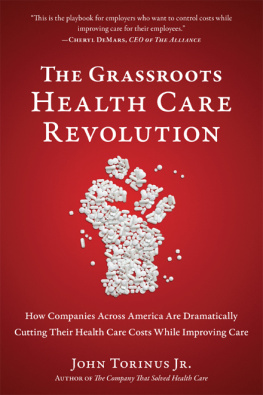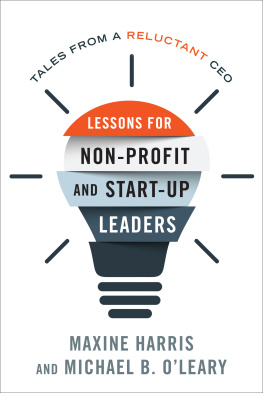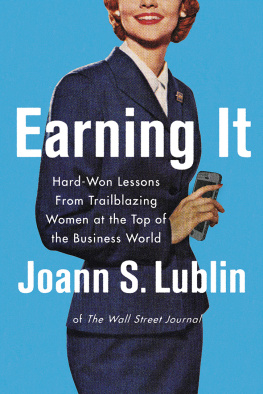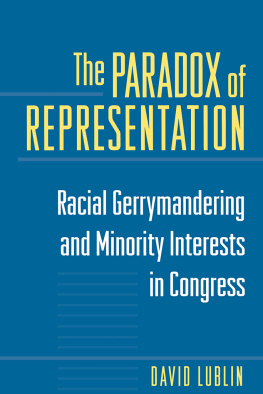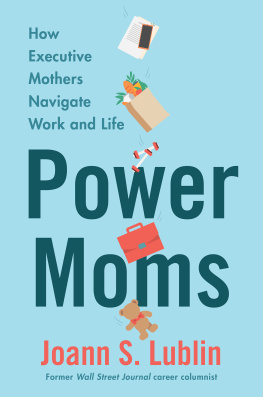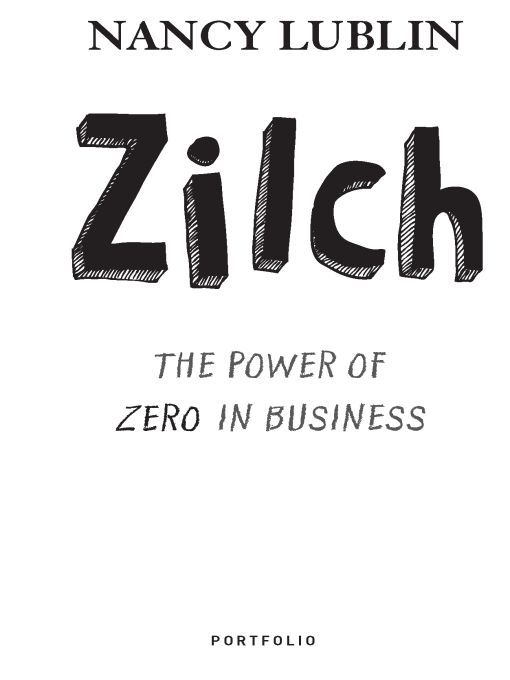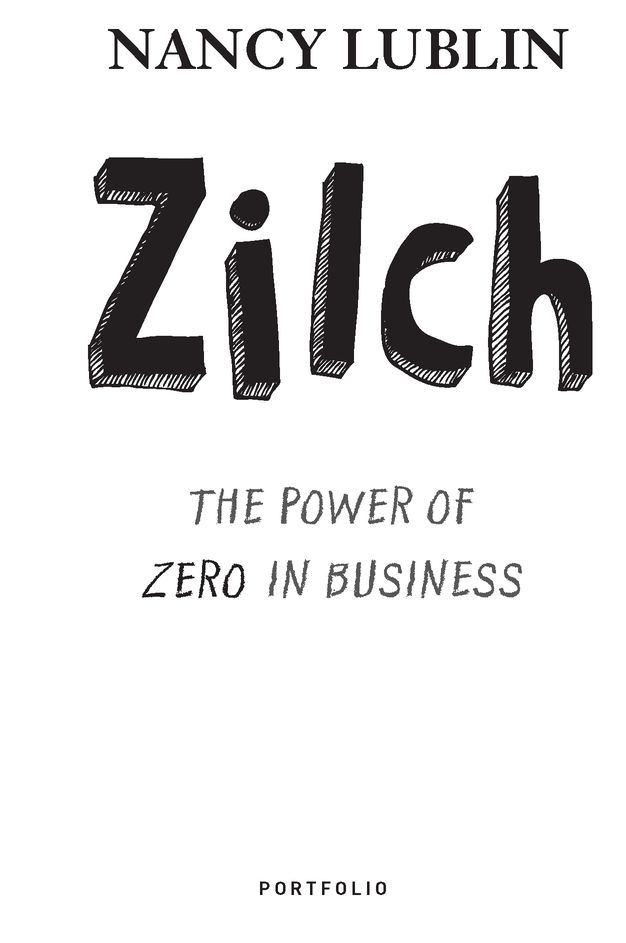Table of Contents
FOR MY DAD
INTRODUCTION
RECENTLY I WAS IN a meeting at the offices of a ginormous global conglomerate. Eight of us sat around a big, beautiful table made of incredible wood no doubt harvested from some disappearing rain forest. A fancy phone in the middle of the table linked us to voices from three other citiesthe media buyer for the company, a rep from the creative firm, and a brand strategist. They served the most amazing oversized oatmeal cookies with white chocolate chips that were still warm, the sweet scent filling the room. We were discussing the launch of a new campaign, so the mood should have been corks-popping celebratory But just the day before, the corporations media budget had been slashed. Everyone in the room was either dejected or in panic. The disembodied voices on the phone were mumbling mournfully to each other.
The most practical thinkers in the roomI counted tworemained hopeful, searching for solutions to this annoying little problem of having zilch. (Note: The advertising budget had been slashed to a mere $2 million.) The top exec in the roomwho was wearing a pair of handcrafted leather shoes so incredibly lovely that the left shoe alone could have been sold on eBay and fed a family of six in Rwanda for a yearannounced that he had the answer: the team would call other departments and try to cobble the money together (another paltry $1.5 million) by cannibalizing from other budget lines. Everyone agreed. One team member immediately poked at her BlackBerry; Im on it, she grunted. I know the sports marketing group can pull some T&E funds, and global marketing should be able to free up something too. Everyone looked relieved. The best response to not having enough money for advertising? Apparently, get more money
Not having money is familiar turf for me, although this ostensible solution of theirs was not. Ive spent my career running not-for-profit organizations that do not have a-gazillion-and-one budget lines from which to steal dollars. So I gently stuck my toe into the boiling water and ventured some suggestions that I thought might be both smart and cost-effective. Have you thought about using free online tools like Twitter to promote this campaign? Silence. Have you thought about leveraging partnerships as distribution channels? More silence. Maybe we could create an event, or hook into a rising trend so that we can generate free buzz from news outlets
They looked at me, silently, as if I had three eyes and six arms and were the firstborn spawn of beings from another planet. Who is this weird creature? What language is she speaking? How did she get past security?
So I responded to their silence with some of my own. Sitting there, I had an epiphany: I think differently. Im not like them. Maybe I am an alien. Im from a weird place: the Land of Zilch. But Im not alone. In fact, I dont think Im particularly gifted. There are lots of freaks like mewere called not-for-profit business leaders.
Simply put, really great not-for-profits are brilliant at doing more with less. We understand the power of zero.
We motivate employees to work past five oclock with commitment, creativity, and passion totally disproportionate to their tiny salaries.
We engage our board members to truly add value to our companies. We dont pay them a dimeand actually, most of them pay us!
We skillfully land donors (a.k.a. customers) with an artful ask and the promise of getting almost nothing in return other than the knowledge ofand warm fuzzies fromdoing something good.
We manage volunteers and getthem to produce amazing resultssay, houses or playgrounds or millions of dollars in revenuewithout a competitive interview process, financial compensation, or the threat of termination.
So instead of standing on my head or doing cartwheels down the center of the table in this plush corporate-headquarters meeting roomI didnt want to destroy all those beautiful cookiesI decided to write down all the lessons they could learn from me, the alien not-for-profit girl. I decided to write a bookand I decided that it would have to be a business book, because that is my experience: I have run not-for-profit businesses for the past seventeen years.
If you are expecting a book about doing more good, youve got the wrong book. This isnt going to be a lecture about how corporations should contribute more to society. This book is not going to mention the terms Zen or mission. It is not a spiritual tome about finding yourself or generating good karmaI want you to read with a highlighter in hand, not a candle.
Everyone loves to talk about how not-for-profits need to behave more like businesses. Theyre right. Weve read the literature, and weve studied best practicesI used the Harvard Business School case study on Dunkin Donuts to help me franchise Dress for Success, which I started in 1996. Weve hired great people from the business world to come lead our organizations, bringing those best practices in-house. Weve even learned to charge for our services, monetize our core competencies, and create sustainable enterprises. By retracing the footprints of the for-profit world, weve learned to think of ourselves as more than just change agentswere change companies. Were transformers.
Weve all watched recently as giant for-profit companies, many of them with invaluable brands and incredible histories, have collapsed. Perhaps we should call them nonprofits? Ive seen CEOs and COOs make executive errors and operational mistakes that no not-for-profit leader worth his salt would make.
Sure, not every for-profit company is readying a bankruptcy filing and ordering cardboard boxes in bulk. But even those companies that arent imploding seem to be slimming budgets, hunting for new and more effective strategies, and striving to squeeze just a little more productivity out of that ever-smaller staff Everyone is counting their pennies, making sure to extract value from every last cent.
These are things that we in the not-for-profit world have been doing for years, and after years and years of being told that we in the not-for-profit sector need to be more structured, more profitable, more strategic, and more like organizations in the corporate world, the pendulum is now swinging in the other direction. Now we not-for-profits have much to offer organizations that are willing to listen and learn.
I started talking to friends at other not-for-profits, asking them to identify the tricks of our trade that might be useful to share. I realized that what we have to offer can be boiled down to one concept: the power of zero. We get more done with less of just about everything from our people to our money to our workplaces to our vendors. Starting with zero isnt a problem for us. Its a challenge that we rise to every day. Zilch is what drives us to be more innovative, more passionate, more creative. Stop whining about your budget cuts and start asking yourself what you would do if you had zilch. Youll be surprised to discover just how powerful that is.
Im not going to suggest that not-for-profits have all the answers or that our approach always translates to the corporate side. Were not perfect either! But there is value, for leaders of all stripes, in looking at best practices in the business of not-for-profit management.
Unlike big business, we not-for-profits may not be able to grow through acquisition, but we do know how to grow through alliance.


